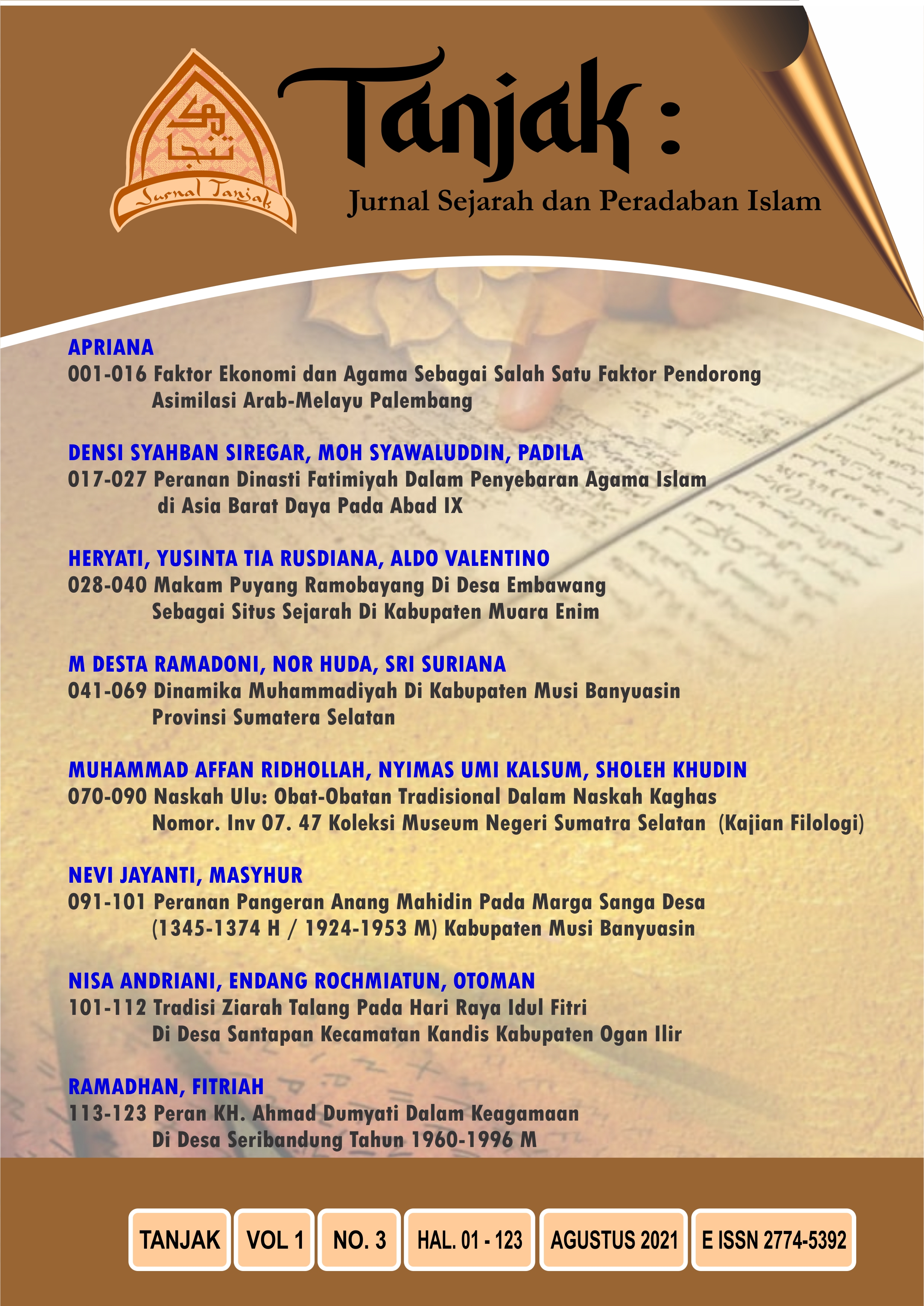Peranan Pangeran Anang Mahidin Pada Marga Sanga Desa (1345-1374 H / 1924-1953 M) Kabupaten Musi Banyuasin
DOI:
https://doi.org/10.19109/tanjak.v1i3.9705Abstract
The hinterland is the designation for one part of the territory contained in Palembang, and the other part is the capital area and is considered the center of power, social, economic and cultural. Inland areas are divided into clans consisting of various villages, totaling 6 to 12. These clans have an orderly government system headed by the Depati or Pasirah and Danguan. The purpose of this study was to determine the role of Prince Anang Mahidin in building the Sanga Desa clan. This research is a qualitative research. Data collection methods in the form of observation, interviews, and documentation. This research uses role theory. From this research, it can be concluded that in the Sanga Desa clan, heredity plays an important role in the selection of clan heads because most of the sandy people who have led the Sanga Desa clan are descendants of Prince Mangkurebin. In addition to being Pasirah Pangeran, he also acted as a government supervisor to manage people's plantations in the Coupon Age. Prince Anang Mahidin's role is also found in the socio-political field, namely in the fields of society, culture, development, education, transportation, economy and religion as well as the political field.
Downloads
Published
31-08-2021
Issue
Section
Articles
License
 This work is licensed under a Creative Commons Attribution-ShareAlike 4.0 International License.
This work is licensed under a Creative Commons Attribution-ShareAlike 4.0 International License.
How to Cite
Jayanti, Nevi, and Masyhur Masyhur. “Peranan Pangeran Anang Mahidin Pada Marga Sanga Desa (1345-1374 H 1924-1953 M) Kabupaten Musi Banyuasin”. Tanjak: Sejarah dan Peradaban Islam 1, no. 3 (August 31, 2021): 91–101. Accessed June 7, 2025. https://jurnal.radenfatah.ac.id/index.php/tanjak/article/view/9705.





